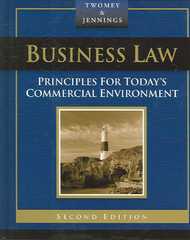Question
The following table shows the hours of labor required to produce 1 unit of each commodity in each country: Corn Blankets U.S. 1 hour 5
The following table shows the hours of labor required to produce 1 unit of each commodity in each country:
Corn Blankets
U.S. 1 hour 5 hours
Mexico 3 hours 6 hours
1. Which country has an absolute advantage in Blankets? In Corn? Explain why? Write down each country's APRs (Autarky Price Ratios). Which country has comparative advantage in Blankets? In Corn?
2. Suppose in our example the U.S. has 1000 hours of labor available and Mexico has 1800 hours of labor, draw the PPF of each country in the graphs below.
United States Mexico
3. Telling from the slope of each country's PPF, which country has comparative advantage in Blankets? In Corn?
4. Suppose that in autarky, the U.S. is at point A, producing and consuming 500 Corn and 100 Blankets. in autarky, Mexico is at point B, producing and consuming 300 Corn and 150 Blankets. Mark points A and B in the graph from part 2.
5. According to the law of comparative advantage. If each country specialized in one production. What product will U.S. produce and how much is production. What product will Mexico produce and how much is production?
6. After part 5, if U.S. produces 1000 Corn and continue to consume 500 Corn, U.S. will now have 500 Corn to trade for Blankets. If the "exchange rate" is 1B = 3.33C (or, 1C = .3B), how many Blankets can the U.S. get in exchange for 500 Corn? Plot the U.S. new consumption point in the graph from part 2. Is the point in or outside of its PPF?
7. After specialization, if Mexico wants to continue to consume 150 Blankets, they will now have 150 Blankets to trade for Corn. If the "exchange rate" is 1B = 3.33C (or, 1C = .3B), how much corn can Mexico get in exchange for 150B? Plot the Mexico new consumption point in the graph from part 2. Is the point in or outside of its PPF?
8. The CPF is a collection of points that represent combinations of corn and blankets that a country can consume if it trades. Draw the CPF curves for U.S. and Mexico in the graph from part 2 when the "exchange rate" is 1B = 3.33C (or, 1C = .3B).
9. What if the terms of trade were not 1B=3.33C, but instead 1B=5C? Draw new CPF for each country in the graph from Part 2.
Step by Step Solution
There are 3 Steps involved in it
Step: 1

Get Instant Access to Expert-Tailored Solutions
See step-by-step solutions with expert insights and AI powered tools for academic success
Step: 2

Step: 3

Ace Your Homework with AI
Get the answers you need in no time with our AI-driven, step-by-step assistance
Get Started


